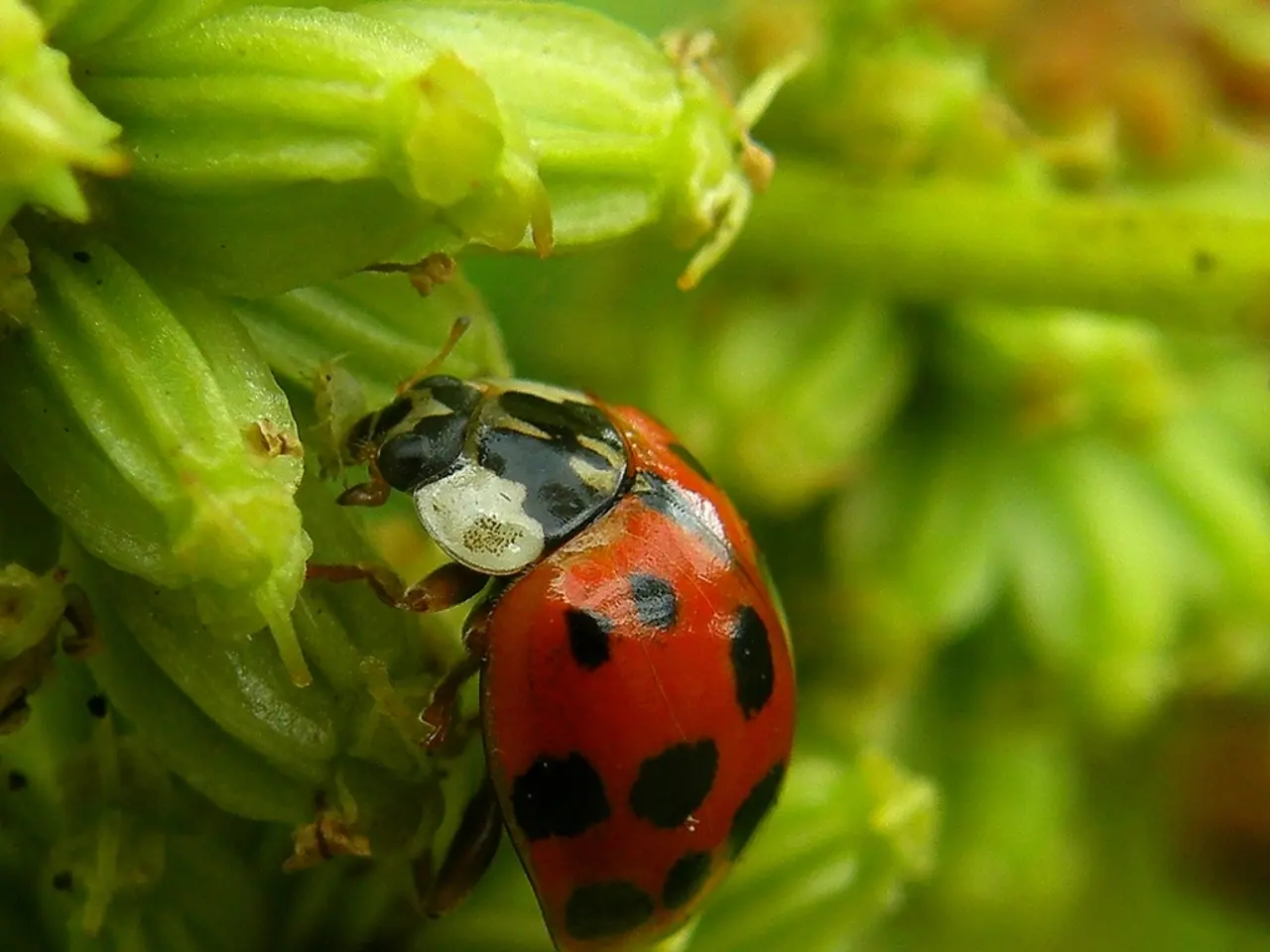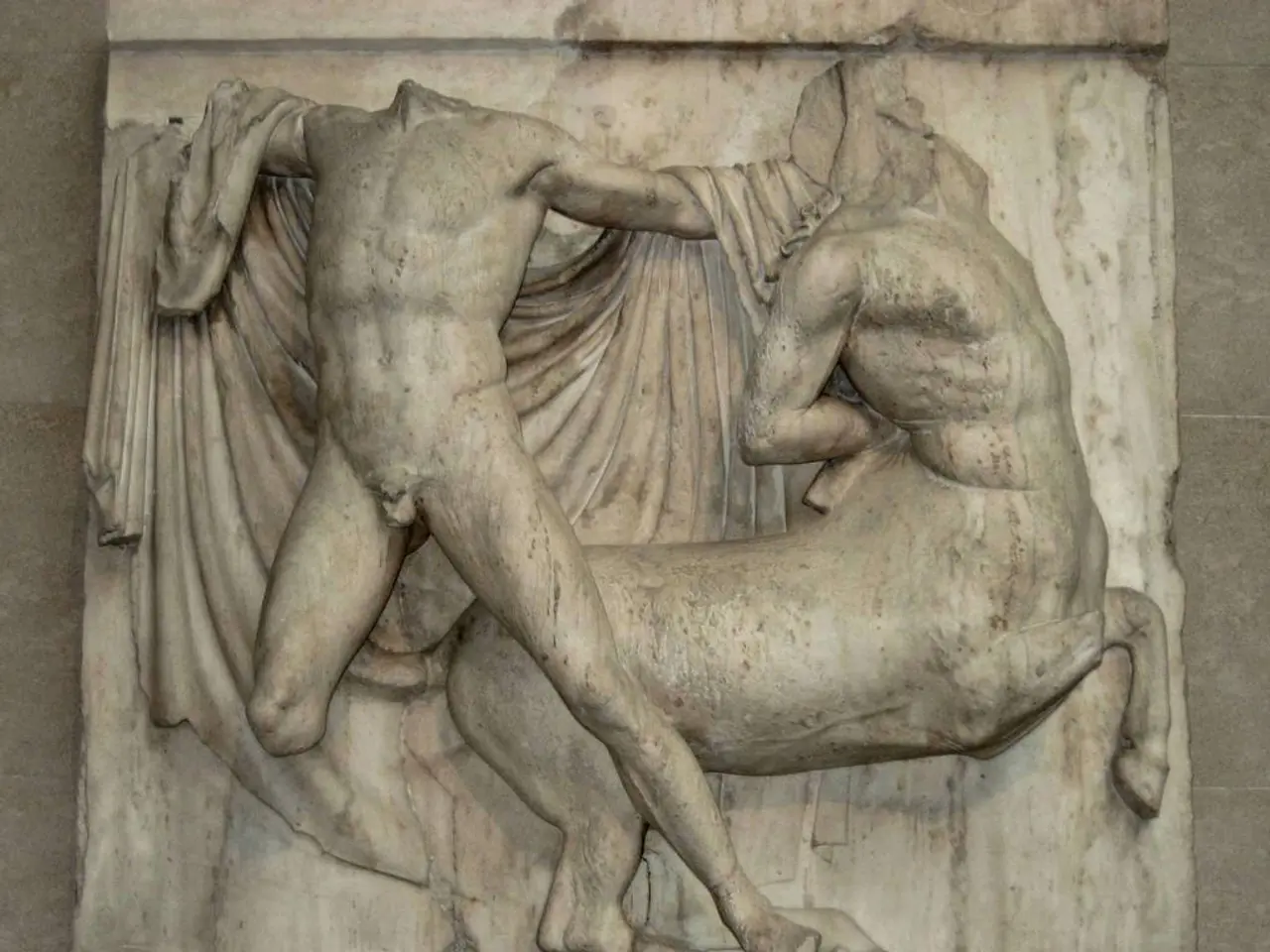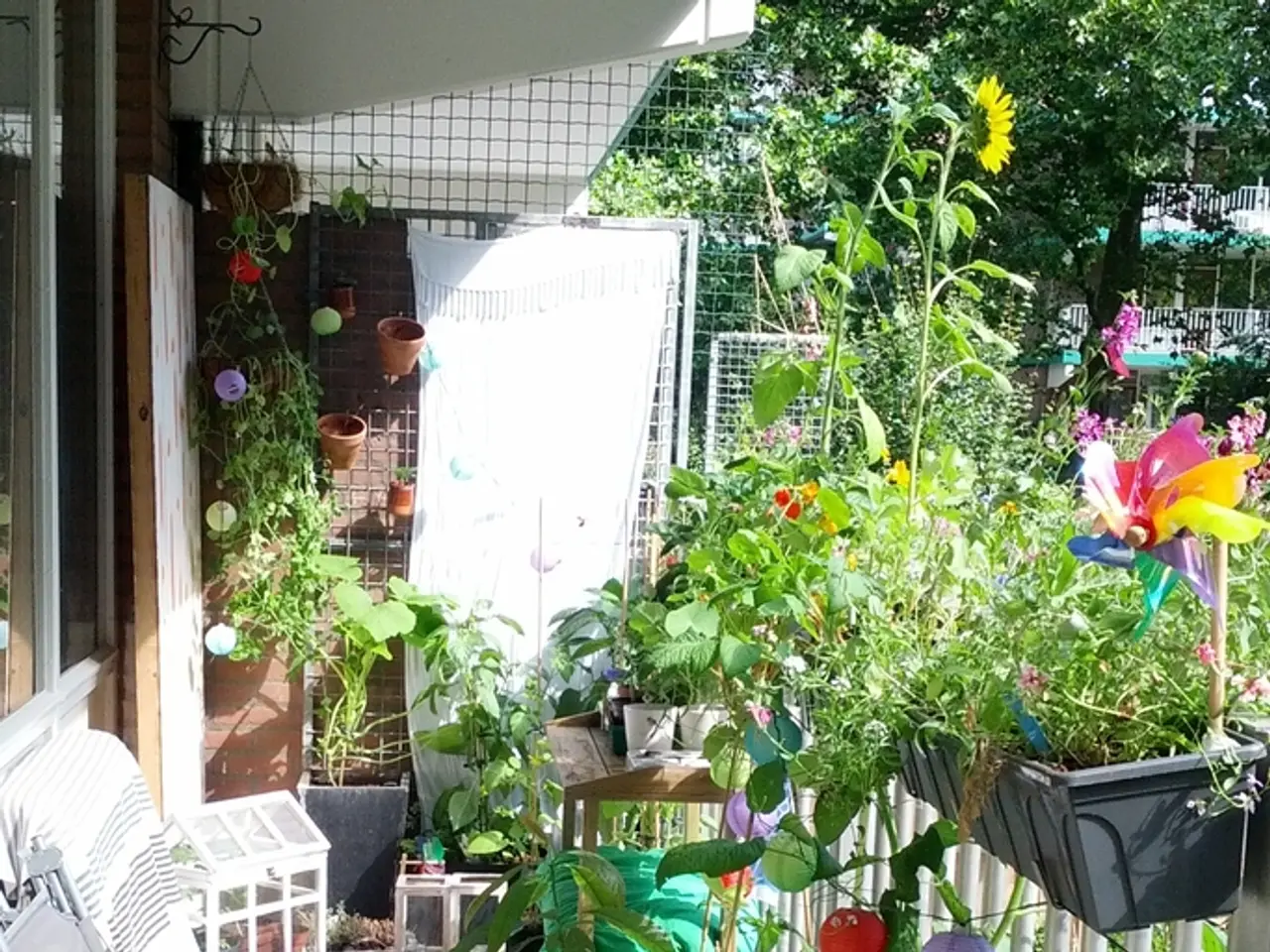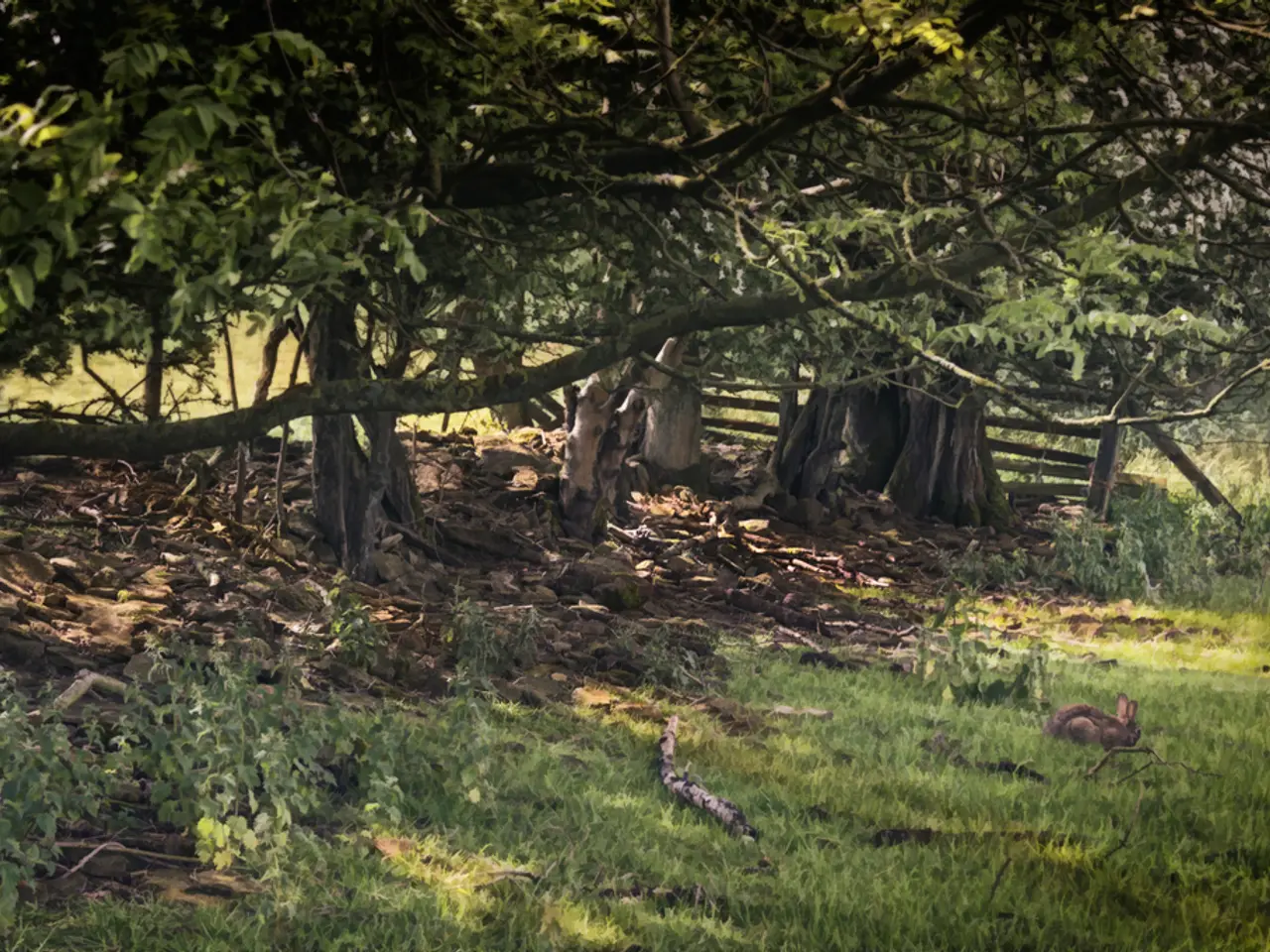Mistake in Macro Photography: Sharp Subjects Lacking Depth Without a Vibrant Background - Solutions for Enhancement
In the captivating world of macro photography, the background often takes a backseat to the intricate details of the subject. However, by paying attention to a few key factors, photographers can create dreamy bokeh effects that elevate their compositions to new heights.
One common mistake in macro photography is focusing solely on the sharpness of the subject, while neglecting the background. This oversight can lead to a lack of visual interest and a loss of the photograph's overall impact. To rectify this, photographers should consider the following recommendations to optimise their subject distance for the best bokeh effects.
Firstly, using a longer focal length macro lens (100–150mm for full-frame) helps shorten the depth of field and isolate the subject effectively. This lens choice contributes to smoother, dreamier bokeh by keeping the subject sharp while the background blurs.
Secondly, placing the subject sufficiently far from the background is crucial. The background should be at a greater distance behind the subject to produce pleasing out-of-focus highlights. If background elements are too close to the subject, the background will not blur well and will compete visually with the subject.
Thirdly, using a wide aperture (small f-number) enhances background blur and bokeh quality. For macro, very narrow apertures (e.g., f/11) increase depth of field but reduce bokeh effect.
Fourthly, the camera-to-subject distance is influenced by lens focal length and focusing ability. Longer lenses require the photographer to be farther from the subject to focus, but they generate better bokeh due to compressed perspective and shallower apparent depth of field.
In summary, there is no single fixed subject-to-camera distance because it depends on your lens, aperture, and composition. The guiding principle is to focus as close as your lens allows (near minimum focusing distance), place the subject far from the background to increase out-of-focus blur, use a long focal length macro lens with a wide aperture to maximise bokeh, and adjust these variables through practical trial and error.
For instance, photographer Catherine Régnier emphasises the importance of considering the background and lighting in macro photography. She recommends using macro lenses with a focal length of between 100mm and 150mm for full-frame (80mm to 100mm for APS-C) to shorten the depth of field and isolate the subject. To create dreamy bokeh, Catherine uses a longer lens, a wide aperture, and places the camera so that background detail is a greater distance behind the subject.
Moreover, Catherine looks for vegetation, colours, and contrasts in the surrounding environment for a beautiful background. Water drops can contribute to a bubble bokeh effect in the background, which can be achieved by timing the shoot during or after rain. For the most impressive backgrounds, shooting at full aperture or a wide aperture (below f/5.6) reduces the depth of field and isolates the subject nicely.
Photographing an insect without surrounding vegetation can result in a bland and insipid background. A diverse range of vegetation, such as tall grass, flowers, shrubs, and stones, is essential for a textured background in macro photography. Catherine Régnier abandons photographing a subject if the background doesn't suit her composition.
Finally, choosing sunrise or sunset can help create contrasts in the background or reflections on the water and gaps of light between the trees. By experimenting with different angles of view, rotating around the subject, and moving closer or slightly further away, photographers can lead to pleasantly surprising results.
In conclusion, mastering the art of macro photography bokeh requires a conscious effort to balance the subject and background. By following the recommendations outlined above, photographers can create stunning compositions that showcase their subject in a unique and captivating way.
- To enhance the dreamy bokeh effect in macro photography, photographers should avoid focusing solely on the sharpness of the subject and pay attention to the background details.
- Using a longer focal length macro lens, such as those ranging from 100–150mm for full-frame cameras, can help shorten the depth of field and isolate the subject effectively.
- Placing the subject further away from the background is essential for producing pleasing out-of-focus highlights and a desirable bokeh effect.
- A wide aperture (small f-number) is beneficial for enhancing background blur and improving the quality of bokeh in macro photography.
- The camera-to-subject distance can influence bokeh effects as it depends on the lens focal length and focusing ability; longer lenses may require a photographer to be farther from the subject to focus but generate better bokeh due to compressed perspective and shallower apparent depth of field.
- Considering the background and lighting in macro photography, such as using macro lenses with a focal length between 100mm and 150mm for full-frame, employing water drops for a bubble bokeh effect, or capturing sunrise or sunset for contrasts can lead to a more visually appealing background.
- Incorporating a diverse range of vegetation, like tall grass, flowers, shrubs, and stones, into the background is vital for achieving a textured and interesting backdrop in macro photography.
- Catherine Régnier, a macro photography enthusiast, suggests experimenting with different angles of view, rotating around the subject, and moving closer or slightly further away to achieve pleasantly surprising results.
- Photographers can create stunning compositions in macro photography when they consciously balance the subject and background, following the recommendations outlined for optimizing bokeh effects.
- Mastering the art of macro photography bokeh requires a conscious effort, making it essential for photographers to explore tutorials, news, and techniques in this field to elevate their skills in photography, particularly in areas like wildlife, portrait, landscape, video, and lifestyle, and when using equipment such as tripods, home-and-garden lenses, and various lighting solutions.




